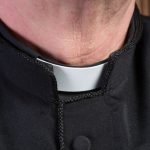Catholic Church: $30 Billion But Won’t Pay Child Sexual Assault Victims

Wealthy, ruthless and immoral: these are some of the words used to describe the Catholic Church during the recent Royal Commission into Institutional Responses to Child Sexual Abuse.
Despite its wealth being comparable to some of Australia’s largest corporations, the Church has fought for many years against compensating victims of sexual abuse.
According to figures released this week, the Catholic Church in Australia is worth some $30 billion.
It has a staggering property portfolio as well as insurance and investment arms, and its own internal banks.
The commercial juggernaut is exempt from rates and taxes, and receives huge government grants for its vast network of schools, hospitals and welfare agencies.
Even in the wake of the Royal Commission’s finding that at least 4,444 victims were sexually abused within Catholic institutions, and that many more will never come forward, the religious goliath has so far failed to properly address the impact on survivors, many of whom are permanently scarred and struggle to get on with their lives.
‘The Church does not exist’
Indeed, the Church has fought tooth and nail to avoid liability – and Australian judges have been on the institution’s side.
In 2007, the NSW Court of Appeal found that the Church is not a separate legal entity, that its vast property portfolio is held on trust and that the organisation is therefore immune from legal action. This is known as the Ellis Defence.
John Ellis was an altar boy when he was sexually abused by a Catholic Priest. When he finally confronted Sydney archdiocese in 2002, then led by Cardinal George Pell, Mr Ellis was offered $25,000 in compensation, which he rejected.
Mr Ellis subsequently requested $100,000 for the damage he had suffered at the priest’s hands, but the church refused. Instead, the Church spent $800,000 fighting the case in court with its high paid lawyers.
The court ultimately found that the Church could not be sued because it did not exist as a separate legal entity in the way corporations and other registered charitable organisations do.
The decision means Australia stands alone in giving the Church such broad immunity – other common law nations such as the US, Canada, Britain and Ireland have found to the contrary.
We can’t afford to pay
As a result of the decision, victims of abuse are left to pursue compensation through the Church’s ‘redress’ schemes, which have been relentlessly criticised as unduly burdensome and manifestly inadequate.
It has been reported that total payments to victims of abuse in the two decades prior to 2015 amount to $57.4 million in Sydney. This amount has been described as ‘paltry’.
Representatives of the Church were asked during the Royal Commission whether larger payments could be made, as most payment are less than $50,000. The Church’s emphatic response was that it couldn’t afford to do so, reportedly misrepresenting its financial position.
However, the newly released financial figures have caused many to second-guess this claim.
Veil of secrecy
Another difficulty for victims is the reluctance, and indeed refusal, of many within the Church to speak out against abusers.
A veil of secrecy pervades the inner workings of the Church, facilitated by the institution’s own law, known as canon law.
One of these laws is Secreta Continere, issued under Pope Paul VI in 1974. Otherwise known as the Pontifical Secret, it imposes a permanent silence on clergy on a range of matters, which encompasses child sexual abuse. A consequence of the law is that complaints of sexual abuse are often destroyed or not kept, and that action is rarely taken against abusing members other than transfers to other locations – ones which are often unaware of the member’s preceding crimes.
In fact, it was only in 2010 that the Church ultimately agreed to comply with legal requirement to report abuse.
Such requirements apply in New South Wales.
conceded that in jurisdictions where the law required the reporting of abuse, the church would abide by it.
In Australia, only NSW and Victoria specifically require such reporting.
While it’s clear from media investigations and the Royal Commission that the church had known about sexual abuse for many years prior to the Royal Commission it has always enforced a ‘damage control’ mentality, rather than support for victims. A top priority has been to retain the image of the church and protect assets.
While the Royal Commission has slammed the church’s ‘veil of secrecy’ only time will tell how the Catholic Church will respond of its own accord, many of its own parishioners are critical of its reluctance to address the issues at hand, and embrace reform, despite not just the Australian Royal Commission, but many stories of abuse now emerging from various corners of the globe.
And, the Church’s lobbying power has, in the past, been quite a force to be reckoned with, making Governments reluctant to impose change. Although as an outcome of the Royal Commission, the Australian Federal Government has accepted the proposal for a national redress scheme for all survivors of abuse, and victims may find some form of compensation within that.








